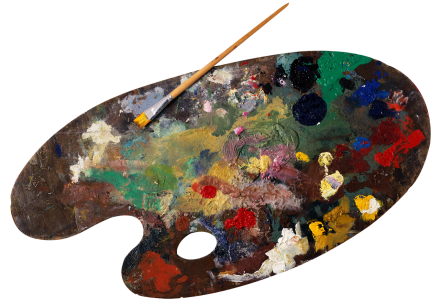Reading aloud to kids is an experience that almost everyone who has spent time with children has in common. Whether you’re a veteran teacher or a teenage babysitter, you’ve probably touched the magic that we create when we take the time to read with kids.

I’ve had some amazing experiences as a parent and a caregiver of reading aloud: the moment when a child recognizes the letters in their name, or a common word, or a rhyming pattern in the text or a repeated phrase or sound that they love to yell out at the top of their lungs.
“Clang Clang Rattle Bing Bang, Gonna make my noise all day!”
~ Robert Munsch, Mortimer ~
Equally amazing are the books that make me cry, the books during which my kids know they can expect mom to get choked up “Mommy, why are you crying… again?!? You know how it ends.”

But whether I’m reading to one kid in a bunk bed or a whole gymnasium full, there are some tricks that I use to keep their interest and make the most of the time and I hope you will find them helpful in your practice as you harvest those magic moments with your students.
- Why this book, for this child, at this time?
Too often when I visit classes, I see read-alouds chosen at the last second or selected because the characters (often familiar from television) are favourites for the kids. Alternately, the book may be a favourite for the teacher, a classic from their childhood or something their own children love. The books we choose to read in our classes should directly relate to the instructional goals we have for our students.
I worry that as you read that last sentence, you’ll be thinking that read-alouds should be dry and boring with curriculum standards attached at two-page intervals. Not at all! Instructional goals might include working on phonological awareness (rhymes, initial sounds, phoneme segmentation) or on prediction, inference, or making connections to personal experience. They might also relate to the children’s social development or their curiosities/inquiries. Whatever your instructional goals are, your read-alouds should support them in a pleasurable way that will increase overall engagement and, even better, give everyone a laugh (or, in my case, a cry).
2. Lights, Camera, Action!
One of my favourite things about the new Fountas & Pinnell Literacy Continuum is that they’ve titled texts read aloud by the teacher as “Shared and Performance Reading.” Describing a read aloud as a performance couldn’t be more accurate. Teaching is highly performative to begin with and reading aloud to students is often the most “on-stage” part of the day. Take advantage of it!
Vary the volume, tone, speed and character of your voice. Change your posture. Move around. Use props and gesture. Be silly! Kids love watching their teacher become the ogre under the bridge, stomping his feet while he drools at the prospect of devouring a tasty goat and then quickly transitioning into the goat with skinny knees knocking together nervously as she tiptoes across the rickety bridge on her delicate hooves. What could be better?!?
3. Don’t do all the work.
Do you know who loves to do funny voices and make sound effects?
Kids!
When read-alouds don’t work, one of the most common reasons is that teachers are doing too much. Kids love to get involved and they can, at any age. They can make the sounds of the cars or the bird or the farts. They can guess the next rhyming word or chant the repeated text in a book. They can also get up and act out parts of the story as they explore the meaning of verbs. If you’re measuring the success of your read-aloud by how quiet and still your students are as you read, I’d suggest that you’re using the wrong measuring stick altogether. Students will be more engaged in the reading when they know they have a role to play in telling the story. The drama glossary in the Ontario Arts Curriculum offers some great ideas for how to actively engage kids in a story. So does the CODE website.
4. It’s too long.
We all have finite attention spans, perhaps even more so in the last few years. Children’s attention spans in Kindergarten are estimated to range from 10-25 minutes. If you’re teaching young children, I would suggest keeping your read-alouds under 15 minutes, maximum. If the book you want to read will take longer than that, there’s nothing wrong with reading it in chunks. Come back to it tomorrow! The kids will get more out of the experience when they’re fresh and pausing will build suspense. It’s a great opportunity to work on prediction: “What do you think will happen next?”
5. Context
Write what you know, the experts tell us. If you don’t have a personal connection to what you’re writing about, it’s not likely to be successful. The same is true for reading, particularly for our youngest children. They need to be able to connect to the story somehow. It can be set somewhere far away and involve people whose lives are very different but if your students don’t have a context within which they can engage with the narrative, they’re likely to tune out, sometimes politely and sometimes not-so-much.

For instance, the book Mama Panya’s Pancakes is set in an Kenyan village and involves experiences many children in urban settings wouldn’t have (fishing, going to a market, bargaining for the price of food) but it centres around sharing food and the experience of hosting friends for a meal. All children are likely to be able to connect to those ideas, even if their only experience of sharing food is at school. Think carefully about what the context is for the books you’re choosing. What’s the entry point for your students? Without a context for the learning, you’re not likely to accomplish your instructional goals, no matter how well intentioned they may be.
































